
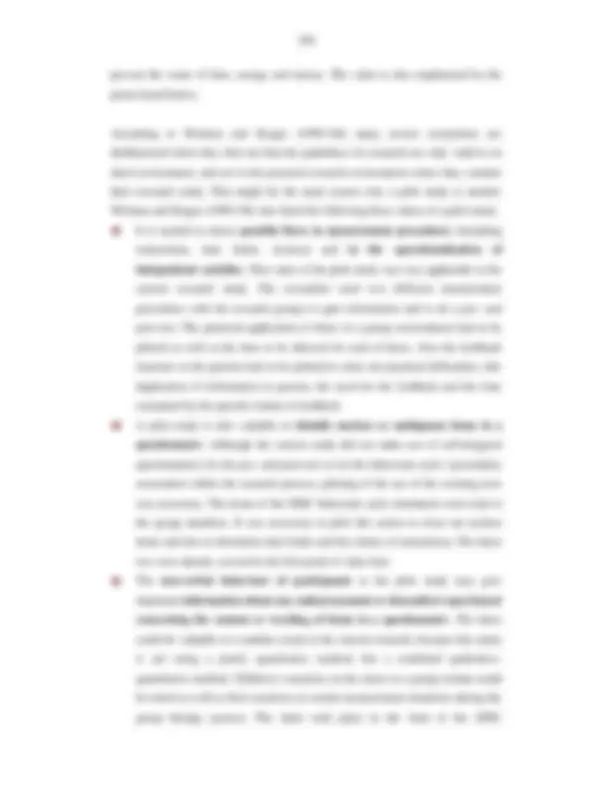
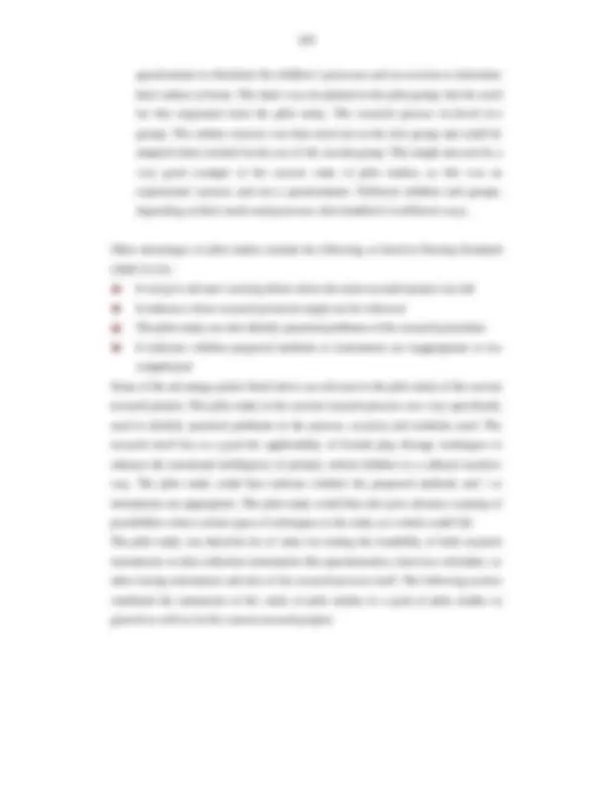
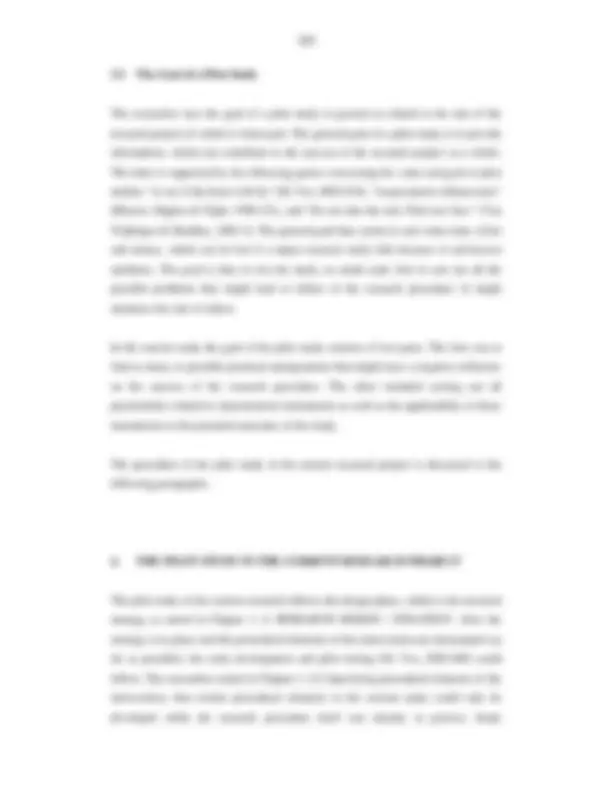
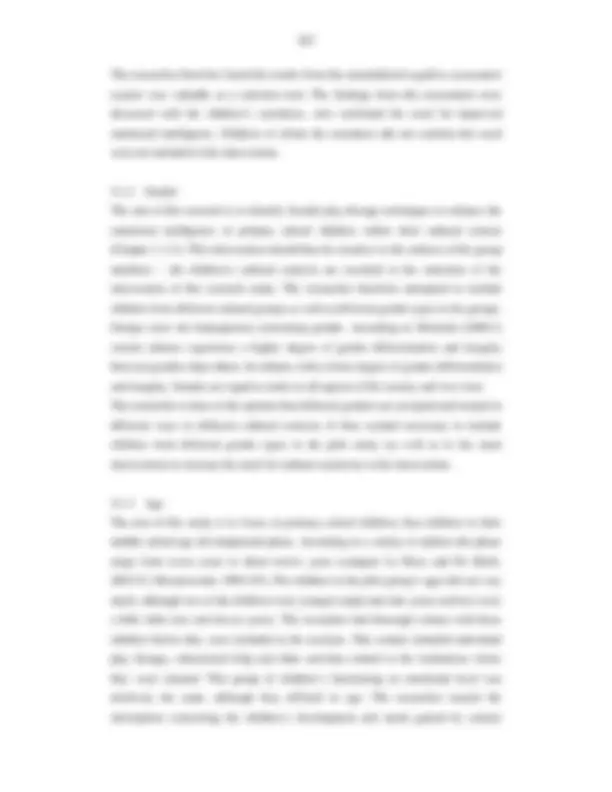
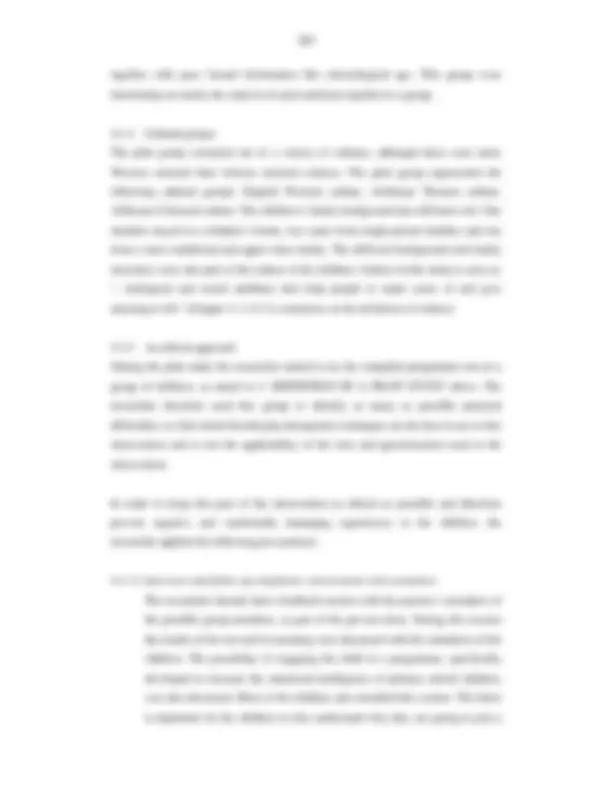
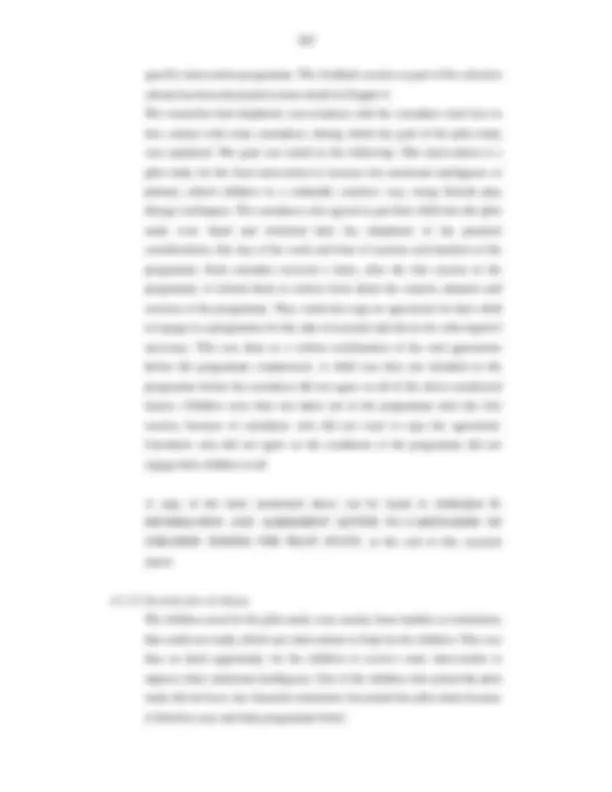
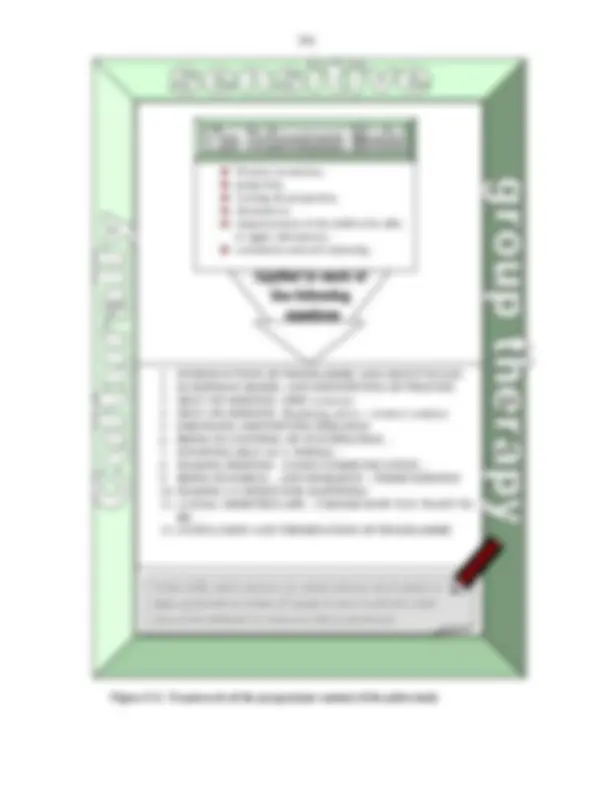
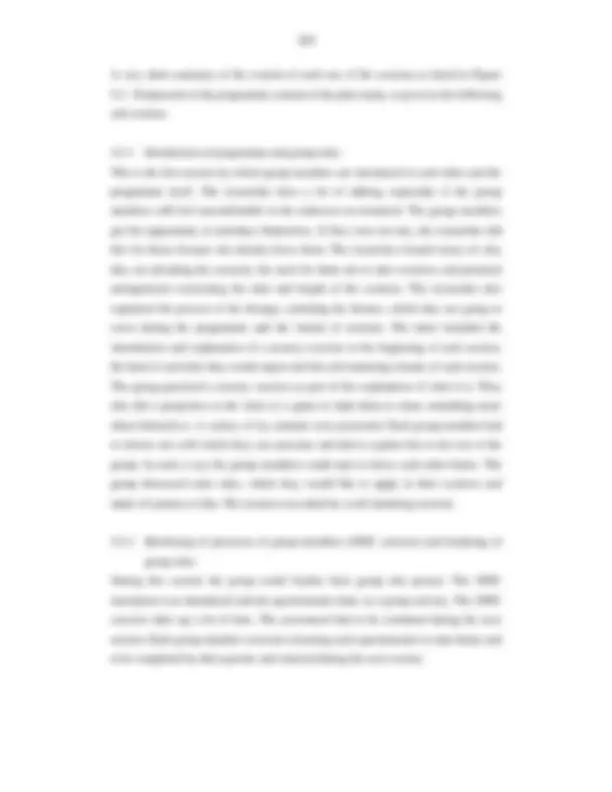
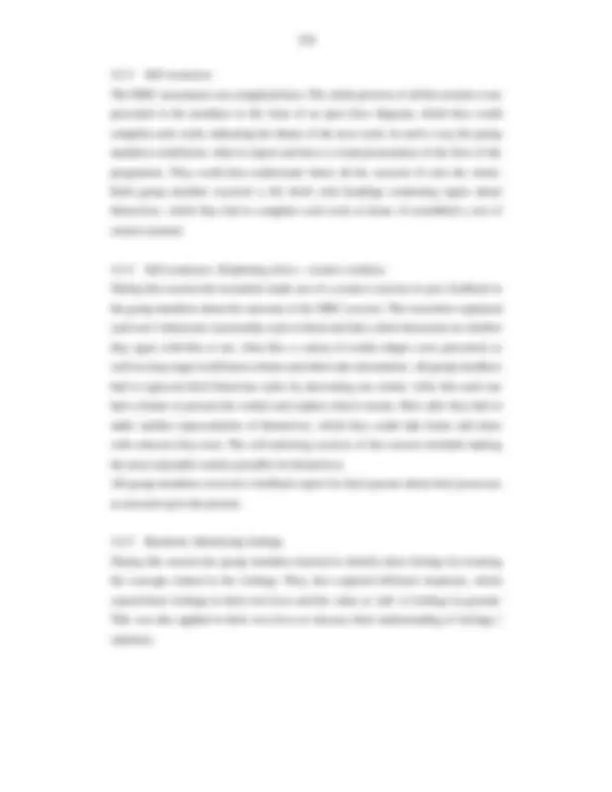
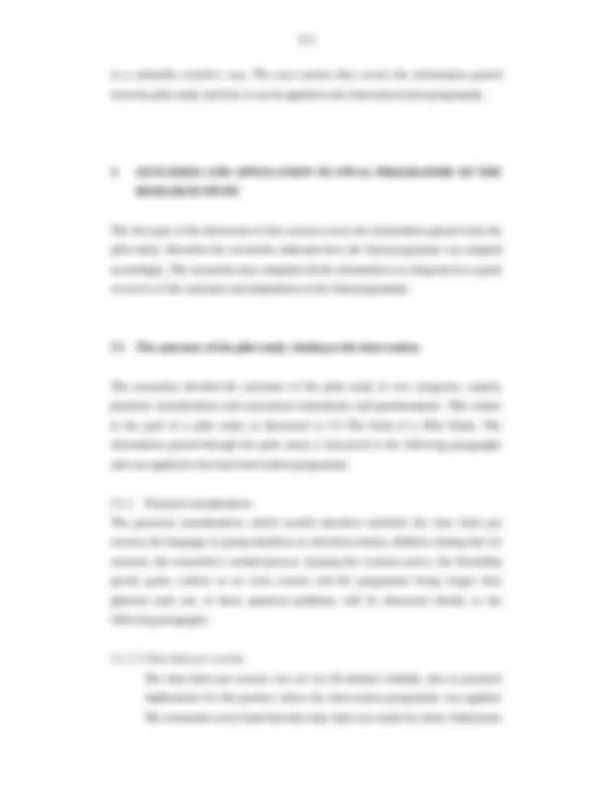
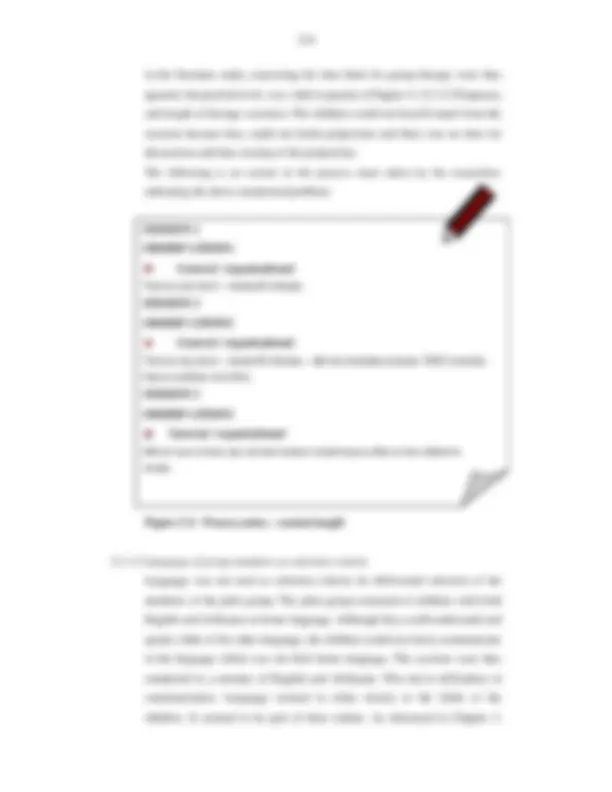
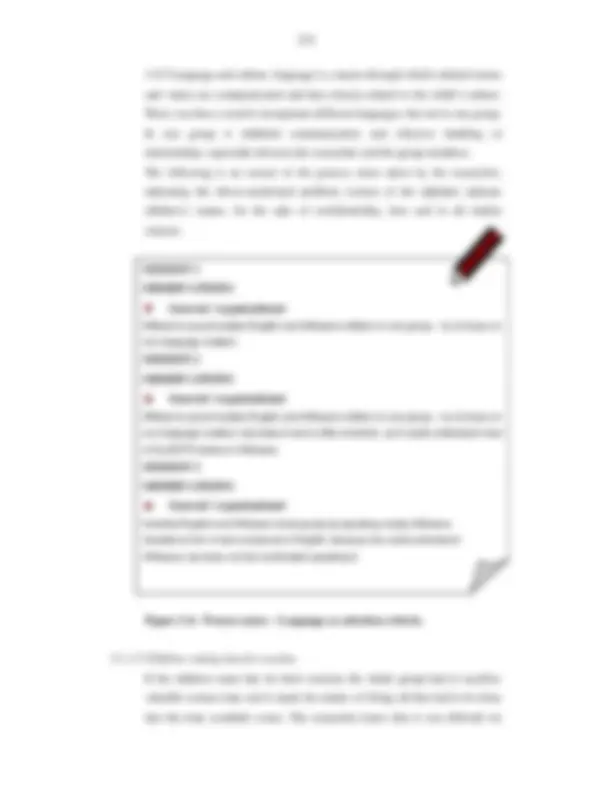
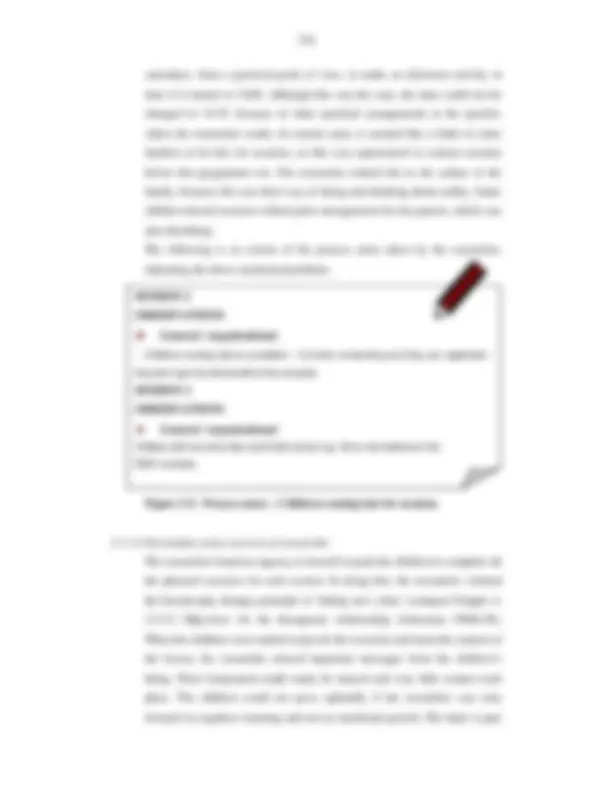
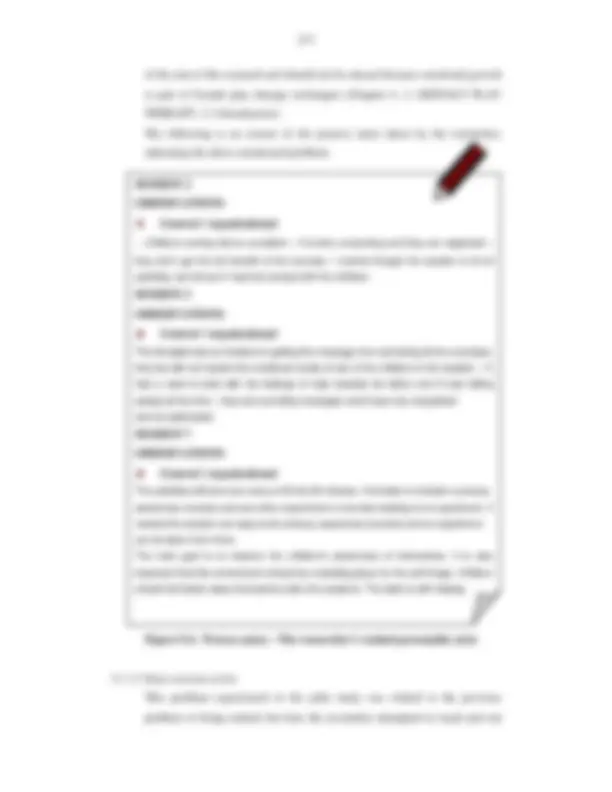
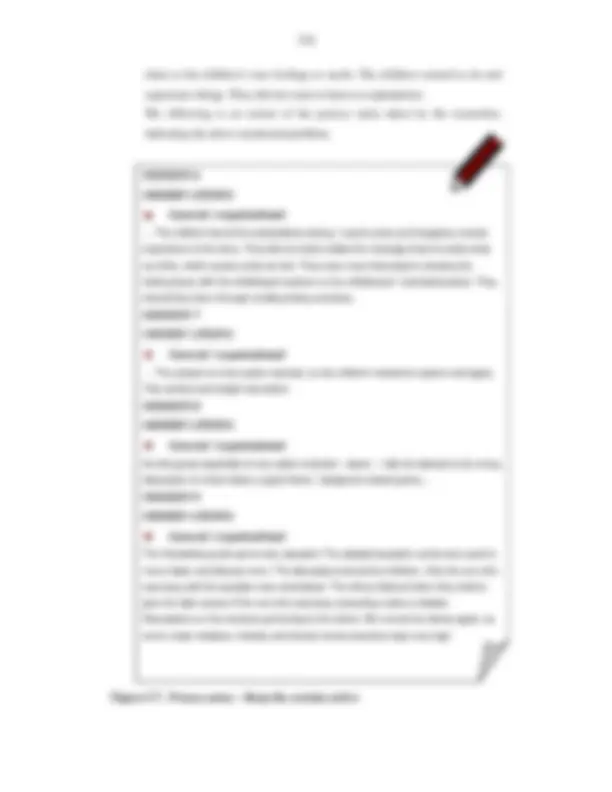
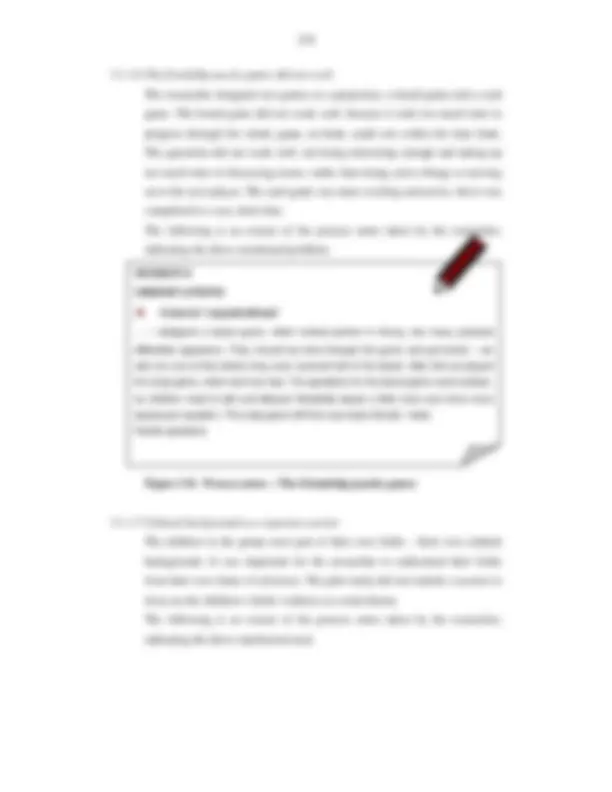
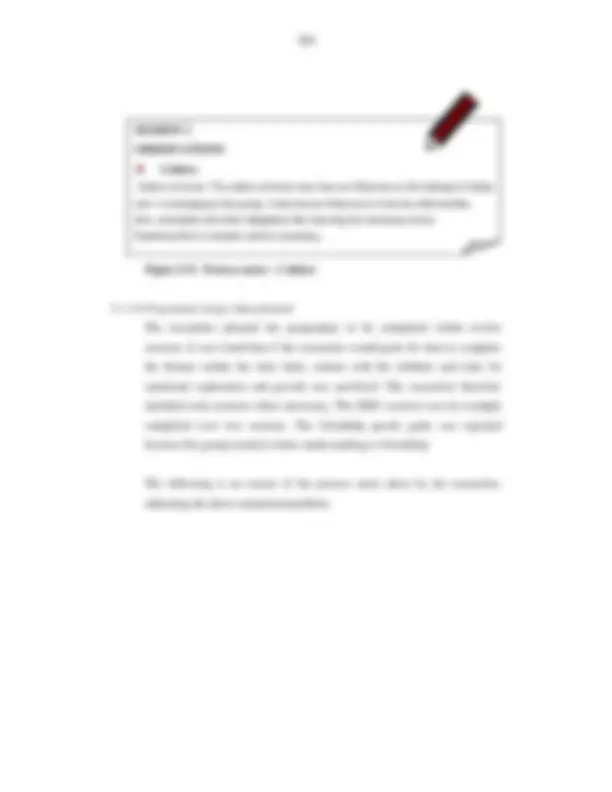
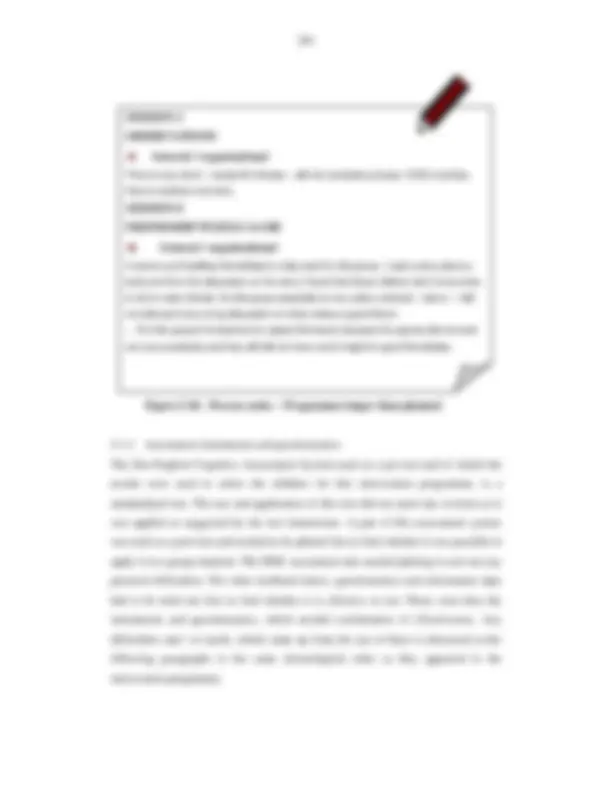
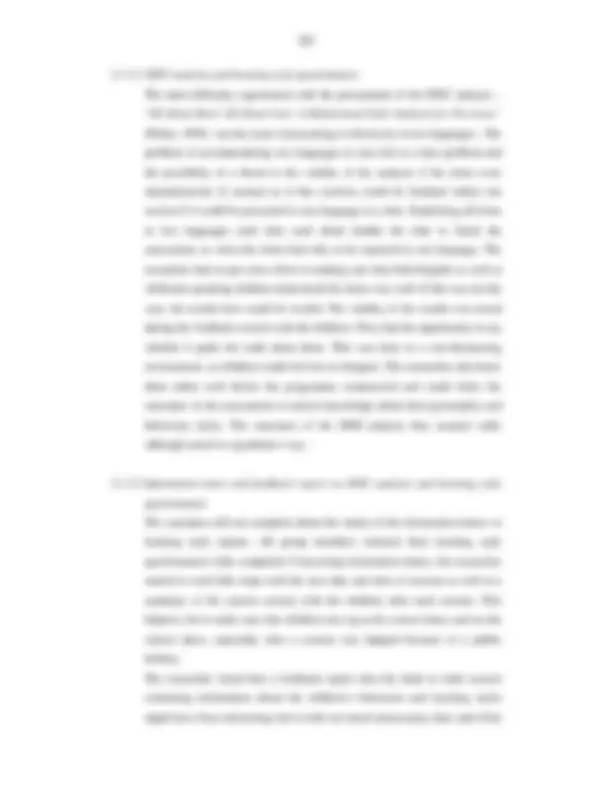
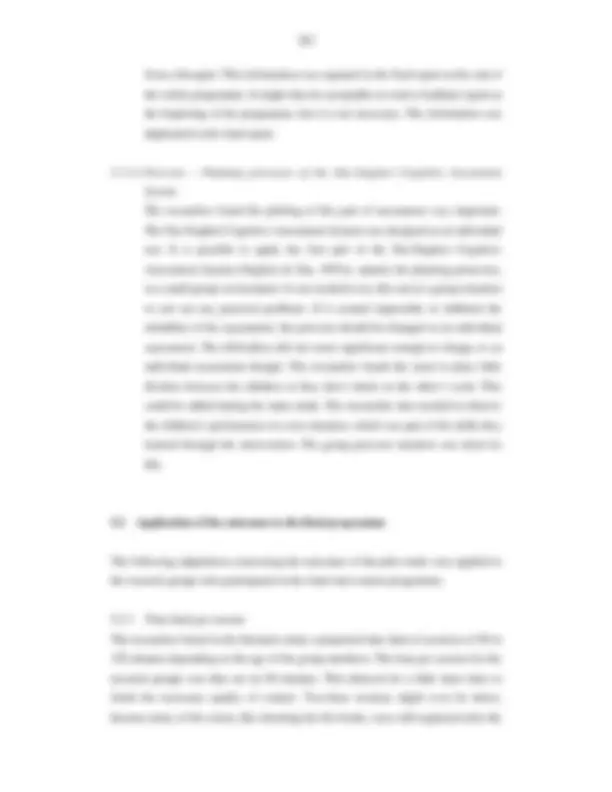
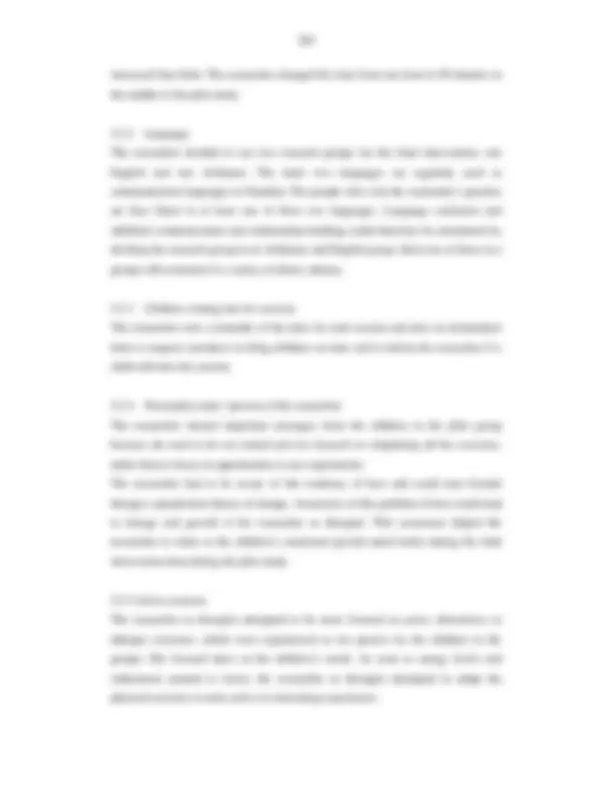
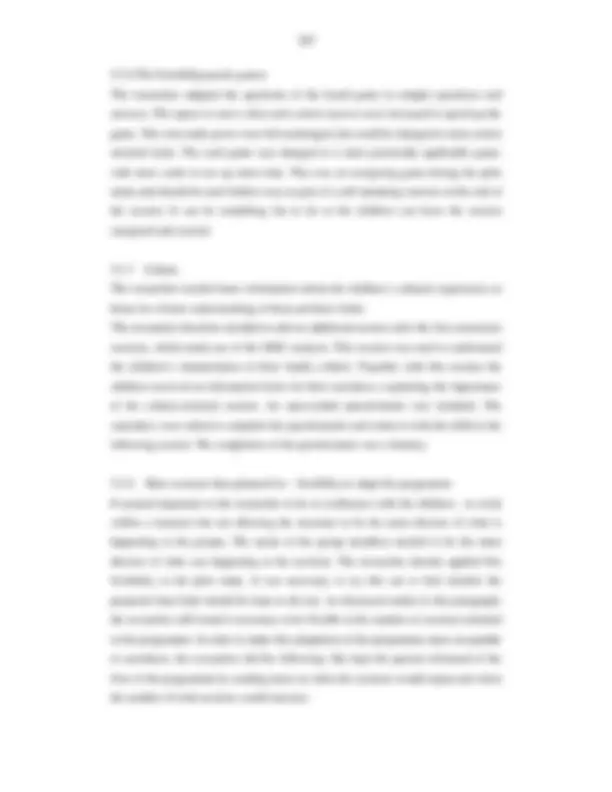
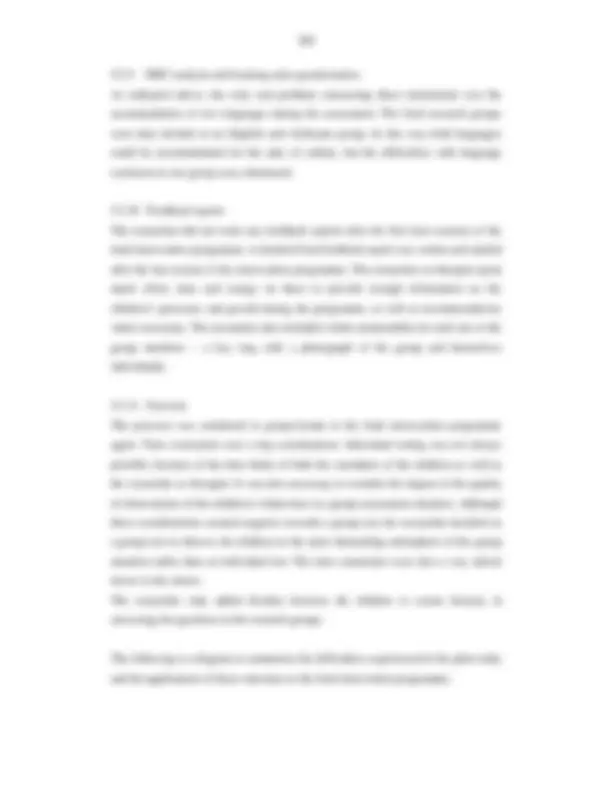
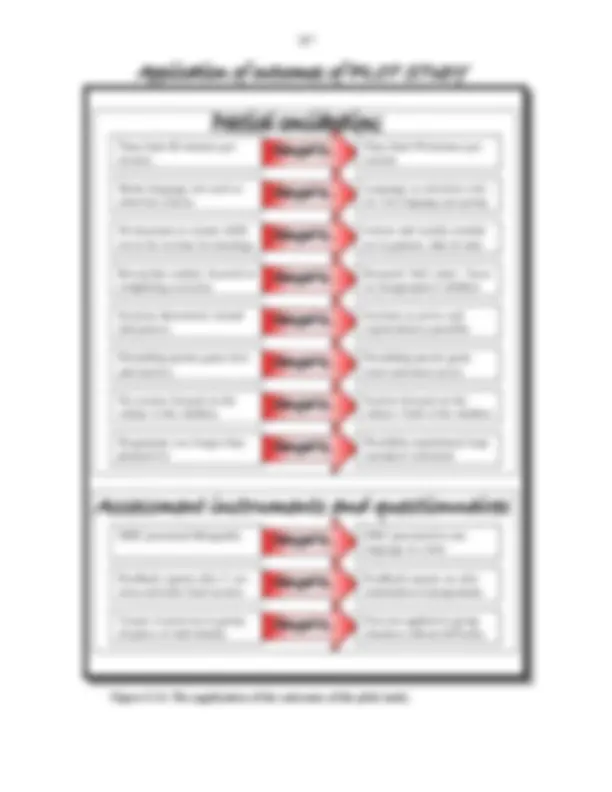
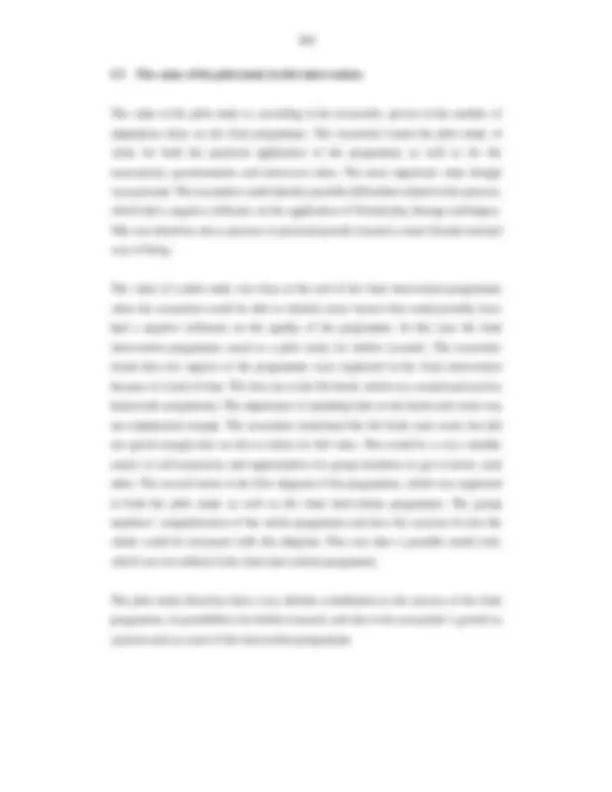
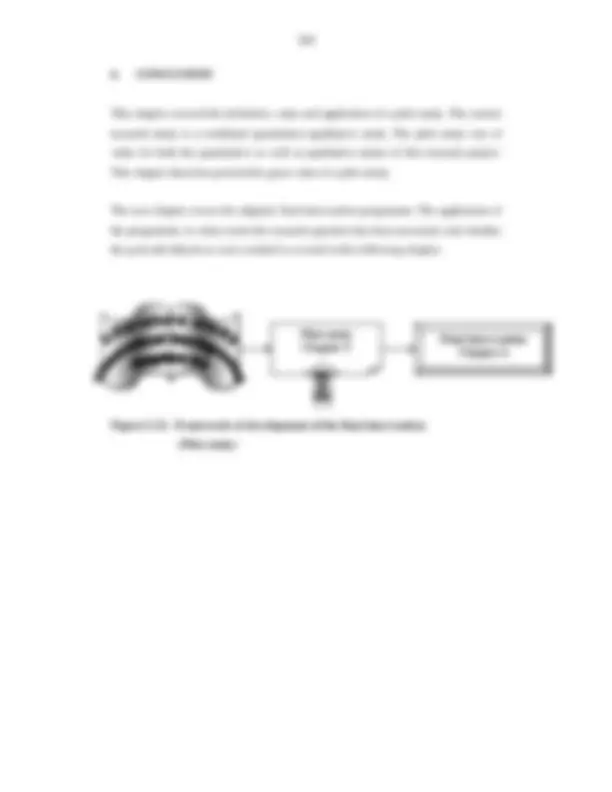


Study with the several resources on Docsity

Earn points by helping other students or get them with a premium plan


Prepare for your exams
Study with the several resources on Docsity

Earn points to download
Earn points by helping other students or get them with a premium plan
Community
Ask the community for help and clear up your study doubts
Discover the best universities in your country according to Docsity users
Free resources
Download our free guides on studying techniques, anxiety management strategies, and thesis advice from Docsity tutors
The importance of pilot studies in educational research, specifically in the context of a Gestalt play therapy program for primary school children. insights into the theoretical background of pilot studies, the advantages of conducting one, and the practical application of the program in a pilot study. It also highlights the challenges encountered during the pilot study and the adaptations made for the final intervention.
What you will learn
Typology: Summaries
1 / 34

This page cannot be seen from the preview
Don't miss anything!



























The pilot study of the current research was the first step of the practical application of the Gestalt play therapy emotional intelligence programme for primary school children. It is also the last step of the first grouping of steps of an intervention research study (De Vos, 2002:409-418) namely, “Early development and pilot testing”. The three groupings of steps are presented visually in Chapter 1, Figure 1. Research procedure. This chapter covers a theoretical background of the definition and value of pilot studies. It also covers the goal of the pilot study – what the researcher expects from a pilot study. The researcher then discusses the application of the pilot study in the current research. The outcomes of the pilot study will also be discussed shortly, because these have a very direct influence on the actual research itself. The researcher will first define a pilot study and state the value thereof following the introduction to clarify what a pilot study really is and why it is needed in the research process.
A pilot study is a mini-version of a full-scale study or a trial run done in preparation of the complete study. The latter is also called a ‘feasibility’ study. It can also be a specific pre-testing of research instruments, including questionnaires or interview schedules. (Compare Polit, et al. & Baker in Nursing Standard, 2002:33-44; Van Teijlingen & Hundley, 2001:1.) The pilot study will thus follow after the researcher has a clear vision of the research topic and questions, the techniques and methods, which will be applied, and what the research schedule will look like. It is “reassessment without tears” (Blaxter, Hughes &
Tight, 1996:121), trying out all research techniques and methods, which the researcher have in mind to see how well they will work in practice. If necessary it can then still be adapted and modified accordingly. (Blaxter, Hughes & Tight, 1996:121) The pilot study in the current research can be defined as mainly a try-out of research techniques and methods, but also of questionnaires and interviews. The researcher compiled an emotional intelligence programme and applied this to a pilot group of primary school children. During this process, the researcher also tested a short open- ended questionnaire on the cultures of the families of the children, questionnaires on their learning styles for the parents, a behaviour style instrument / questionnaire on the children in the pilot group and feedback reports on these to the parents. The pilot study of the current research can therefore be defined as both a feasibility study as well as a pre-testing of instruments, questionnaires and interviews.
The value of first piloting the whole research process is discussed in the next section, because if a pilot study is of too little value, the researcher can waste time, energy and money.
The researcher first discussed the value of a pilot study as stated by different authors and then the applicability to the current study in the following paragraphs. After stating the value of such a study, the researcher compiled the goal of a pilot study for the current research project.
3.1 The Value of a Pilot Study
Blaxter, et al. (1996:122) states that “You may think that you know well enough what you are doing, but the value of pilot research cannot be overestimated. Things never work quite the way you envisage, even if you have done them many times before, and they have a nasty habit of turning out very differently than you expected”. It is thus very clear to the researcher, that the pilot study in the current research was essential to
questionnaire to determine the children’s processes and an exercise to determine their culture at home. The latter was not piloted in the pilot group, but the need for this originated from the pilot study. The research process involved two groups. The culture exercise was thus tried out on the first group and could be adapted where needed for the use of the second group. This might also not be a very good example of the current value of pilot studies, as this was an experiential exercise and not a questionnaire. Different children and groups, depending on their needs and processes, thus handled it in different ways.
Other advantages of pilot studies include the following as listed in Nursing Standard (2002:33,34): It can give advance warning about where the main research project can fail It indicates where research protocols might not be followed The pilot study can also identify practical problems of the research procedure It indicates whether proposed methods or instruments are inappropriate or too complicated Some of the advantage points listed above are relevant to the pilot study of the current research project. The pilot study in the current research process was very specifically used to identify practical problems in the process, sessions and methods used. The research itself has as a goal the applicability of Gestalt play therapy techniques to enhance the emotional intelligence of primary school children in a cultural sensitive way. The pilot study could thus indicate whether the proposed methods and / or instruments are appropriate. The pilot study could thus also give advance warning of possibilities where certain types of techniques or the study as a whole could fail. The pilot study can therefore be of value for testing the feasibility of both research instruments or data collection instruments like questionnaires, interview schedules, or other testing instruments and also of the research process itself. The following section combined the statements of the value of pilot studies in a goal of pilot studies in general as well as for the current research project.
3.2 The Goal of a Pilot Study
The researcher sees the goal of a pilot study in general as related to the aim of the research project of which it forms part. The general goal of a pilot study is to provide information, which can contribute to the success of the research project as a whole. The latter is supported by the following quotes concerning the value and goal of pilot studies: “to see if the beast will fly” (De Vos, 2002:410), “reassessment without tears” (Blaxter, Hughes & Tight, 1996:121), and “Do not take the risk. Pilot test first.” (Van Teijlingen & Hundley, 2001:2). The general goal thus seems to safe some time, effort and money, which can be lost if a major research study fails because of unforeseen attributes. The goal is thus to test the study on small scale first to sort out all the possible problems that might lead to failure of the research procedure. It might minimise the risk of failure.
In the current study the goal of the pilot study consists of two parts. The first was to find as many as possible practical arrangements that might have a negative influence on the success of the research procedure. The other included sorting out all practicalities related to measurement instruments as well as the applicability of these instruments to the potential outcomes of the study.
The procedure of the pilot study in the current research project is discussed in the following paragraphs.
The pilot study of the current research follows the design phase, which is the research strategy as stated in Chapter 1, 8. RESEARCH DESIGN / STRATEGY. After the strategy is in place and the procedural elements of the intervention are determined (as far as possible), the early development and pilot testing (De Vos, 2002:409) could follow. The researcher stated in Chapter 1, 8.2 Specifying procedural elements of the intervention, that certain procedural elements in the current study could only be developed while the research procedure itself was already in process. Some
4.1 Selection of group members for the pilot study
The researcher used the same selection criteria for the pilot study as for the final intervention. The criteria used specifically for the pilot study is discussed very shortly in the following paragraphs. Some criteria were added to the final selection criteria as a result of the outcomes of the pilot study. The final selection criteria are discussed in more detail in Chapter 6, 5.2 Selection of the group members.
The following are the main selection criteria used for the members for the group of the pilot study: The use of the results of a specific pre-test to determine the need for enhancement of emotional intelligence Gender Age Cultural groups Maintaining an ethical approach to the group members and their care takers
4.1.1 Use of the results of a specific pre-test The researcher made use of the results from the Das-Naglieri Cognitive Assessment System (Naglieri and Das, 1997a). The theoretical background of this assessment tool is discussed in Chapter 2, 1.5 Cognitive development – Planning processes and 3. Assessment of emotional intelligence. Children who needed help with planning processes as part of the four processes underlying effective intellectual functioning (Naglieri & Das, 1997b:2) were included in this research project. Difficulties with planning processes are related to difficulties with control of behaviour, interpersonal problems and impulsivity (Naglieri & Das, 1997b:10). The latter are also very typical attributes related to emotional intelligence (compare Goleman, 1996; Le Roux & De Klerk, 2001; Le Roux & De Klerk, 2003; Maree, 2004; Vermeulen, 1999; Wood & Tolley, 2003:7). As stated in Chapter 2, 3.4 Assessment of emotional intelligence, the children included in this study’s emotional intelligence were assessed as part of their cognitive processes also, and not only on the base of emotional and behavioural related problems. The researcher has a holistic approach to children including their assessment as well as designing intervention programmes to help them.
The researcher therefore found the results from this standardised cognitive assessment system very valuable as a selection tool. The findings from this assessment were discussed with the children’s caretakers, who confirmed the need for improved emotional intelligence. Children of whom the caretakers did not confirm this need were not included in the intervention.
4.1.2 Gender The aim of this research is to identify Gestalt play therapy techniques to enhance the emotional intelligence of primary school children within their cultural context (Chapter 1, 4.1). This intervention should thus be sensitive to the cultures of the group members – the children’s cultural contexts are essential to the outcomes of the intervention of this research study. The researcher therefore attempted to include children from different cultural groups as well as different gender types in the groups. Groups were not homogenous concerning gender. According to Hofstede (2005:1) certain cultures experience a higher degree of gender differentiation and inequity between genders than others. In cultures with a lower degree of gender differentiation and inequity, females are equal to males in all aspects of the society and vice virsa. The researcher is thus of the opinion that different genders are accepted and treated in different ways in different cultural contexts. It thus seemed necessary to include children from different gender types in the pilot study (as well as in the main intervention) to increase the need for cultural sensitivity in the intervention.
4.1.3 Age The aim of this study is to focus on primary school children, thus children in their middle school age developmental phase. According to a variety of authors this phase range from seven years to about twelve years (compare Le Roux and De Klerk, 2003:23; Mwamwenda, 1996:353). The children in the pilot group’s ages did not vary much, although two of the children were younger (eight and nine years) and two were a little older (ten and eleven years). The researcher had thorough contact with these children before they were included in the sessions. This contact included individual play therapy, educational help and other activities related to the institutions where they were situated. This group of children’s functioning on emotional level was relatively the same, although they differed in age. The researcher trusted the information concerning the children’s development and needs gained by contact
specific intervention programme. The feedback session as part of the selection criteria has been discussed in more detail in Chapter 6. The researcher had telephonic conversations with the caretakers (and face to face contact with some caretakers), during which the goal of the pilot study was explained. The goal was stated as the following: This intervention is a pilot study for the final intervention to increase the emotional intelligence of primary school children in a culturally sensitive way, using Gestalt play therapy techniques. The caretakers who agreed to put their child into the pilot study were listed and informed later (by telephone) of the practical considerations, like day of the week and time of sessions and duration of the programme. Each caretaker received a letter, after the first session of the programme, to inform them in written form about the content, duration and sessions of the programme. They could also sign an agreement for their child to engage in a programme for the sake of research and also to be video taped if necessary. This was done as a written confirmation of the oral agreements before the programme commenced. A child was thus not included in the programme before his caretakers did not agree on all of the above-mentioned factors. Children were thus not taken out of the programme after the first session, because of caretakers who did not want to sign the agreement. Caretakers who did not agree on the conditions of the programme did not engage their children at all.
A copy of the letter mentioned above can be found in Addendum B, INFORMATION AND AGREEMENT LETTER TO CARETAKERS OF CHILDREN JOINING THE PILOT STUDY, at the end of this research report.
4.1.5.2 Sessions free of charge The children used for the pilot study were mostly from families or institutions that could not really afford any intervention or help for the children. This was thus an ideal opportunity for the children to receive some intervention to improve their emotional intelligence. One of the children who joined the pilot study did not have any financial constraints, but joined the pilot study because it fitted her year and daily programme better.
The researcher did therefore not charge any fees for time and material used to present the pilot study, because this was used to determine the success of the final programme. The group members were thus exposed to situations, which might not be as effective as those in the finalised research intervention.
4.1.5.3 Effort and quality of intervention Although the children formed part of a pilot study, the researcher attempted not to treat this group any differently from the groups of the final study. The researcher therefore spent just as much, if not more, energy and effort on the success of this programme. The children were treated equal to any one of the other children who attend helping programmes at the researcher’s practice. The researcher attempted to spend optimum time, effort, energy and the necessary back-up service needed, on this group of children. If these children did not feel important and valued as a person, the researcher would fail to improve their self-images and to maintain contact for emotional growth (good interpersonal relationships), which is integral to emotional intelligence and Gestalt therapy (compare Jarosewitsch, 1995:2; Le Roux and De Klerk, 2003:25; Mackewn, 2004:71-79; Vermeulen, 1999:65; Yontef, 1993:3).
According to the researcher, the extent to which she gave herself (including effort, energy and enthusiasm) is already a very important way to increase personal contact and a sense of importance experienced by the group members.
4.1.5.4 Feedback and termination of sessions The researcher attempted to keep the caretakers informed about the content of sessions and assessments done during the programme. It was important to the researcher to maintain the same quality of feedback in the pilot study as that of the final intervention. The children who participated in the pilot study received a total of three feedback sessions and / or reports from the initial selection test to the end of the intervention. These included the following:
Figure 5.2: Framework of the programme content of the pilot study
Sensory awareness, projection, owning the projection, alternatives, empowerment of the child to be able to apply alternatives, conclusion and self-nurturing.
Notes after each session on observations and needs to keep qualitative track of research and indicate what should be adapted to improve the programme.
A very short summary of the content of each one of the sessions as listed in Figure 5.2: Framework of the programme content of the pilot study, is given in the following sub sections:
4.2.1 Introduction of programme and group rules This is the first session by which group members are introduced to each other and the programme itself. The researcher does a lot of talking, especially if the group members still feel uncomfortable in the unknown environment. The group members got the opportunity to introduce themselves. If they were too shy, the researcher did this for them, because she already knew them. The researcher cleared issues of why they are attending the sessions, the need for them not to miss sessions, and practical arrangements concerning the time and length of the sessions. The researcher also explained the process of the therapy, including the themes, which they are going to cover during the programme and the format of sessions. The latter included the introduction and explanation of a sensory exercise in the beginning of each session, the kind of activities they could expect and the self-nurturing closure of each session. The group practiced a sensory exercise as part of the explanation of what it is. They also did a projection in the form of a game to help them to share something more about themselves. A variety of toy animals were presented. Each group member had to choose one with which they can associate and had to explain this to the rest of the group. In such a way the group members could start to know each other better. The group discussed some rules, which they would like to apply in their sessions and made A3 posters of this. The session was ended by a self-nurturing exercise.
4.2.2 Identifying of processes of group members (DISC exercise) and finalising of group rules During this session the group could finalise their group rule posters. The DISC instrument was introduced and the questionnaire done as a group activity. The DISC exercise takes up a lot of time. The assessment had to be continued during the next session. Each group member received a learning style questionnaire to take home and to be completed by their parents and returned during the next session.
4.2.6 Being in control of our feelings… Here the group members could start to apply their knowledge about feelings to their lives. Taking responsibility for their own lives was a very important theme to cover from now on. The group members learned a method of how to control certain feelings like test anxiety and anger.
4.2.7 Knowing self as a whole… The researcher focused a lot on holism both as part of Gestalt therapy as well as emotional intelligence. During this session the children used games to understand how all the different parts of their selves are influencing each other. Discussions on how they experienced this in their lives were used to own the projection.
4.2.8 Making friends – Good communication… Good social skills are important to good emotional intelligence as well as to children in primary school. The researcher designed two different fun games to teach social skills focusing on relationships with peers. The latter seems very important to children in this developmental age (Chapter 2). Discussions on the application of these in their own lives and promises to try it out in the coming week were used as owning of the projection.
4.2.9 Being flexible…and resilient – Perseverance This session was mainly based on discussions on projections of things that can go wrong in the children’s lives. The researcher led the group to a way to handle these things. They used creative exercises to make it their own. The continuous theme of taking responsibility for their lives were emphasised using this theme too.
4.2.10 Making a choice for happiness Choosing happiness was also part of taking responsibility for their lives. The group members used discussions and biblio play to find how they can make themselves happy. They made a big collage poster of things to use to make themselves happy. The ABC theory of Albert Ellis (compare Corey, 1996:371-390; Möller,1990) was used in the discussion and imaginary exercises were used to understand this theory.
4.2.11 A goal oriented life – Choose how you want to be… Responsibility was still a continuous theme. The children could now start to use their previously gained knowledge about themselves to create a goal for their own lives. They each made a flag as a symbol of the goal for their lives. Discussions on the meaning of their flags were used as owning of the projection.
4.2.12 Conclusion and termination of programme The last session of the programme was used to do a group retest of the planning processes of the Das-Naglieri Cognitive Assessment System (Naglieri & Das, 1997a). The latter was used as the main assessment tool for emotional intelligence in this study. The group ended the session with a group party for which each member provided something to eat. They played games, had something to eat and could enjoy their last session together in any way they preferred. The researcher took some photographs of the group to add to their feedback reports sent to them and their parents after completion of the programme.
4.3 Termination of pilot programme
The group contact sessions of the pilot programme was terminated after the last session. The pilot programme was only completed after the researcher mailed a report to all the caretakers containing information about the content of the programme, programme goals, and whether the post-test and observations of the researcher proofed the intervention to be successful or not. The processes of the children were repeated in this feedback report so caretakers could have a better understanding of the child as a whole. The researcher also invited caretakers to further discussions should they have any queries or a need for more information. If needed the researcher also added information to this report to use for extra help, like notes on lifestyle changes for children with concentration problems.
The results from the notes taken after each contact session were used to adapt the programme to be more effective in reaching the aim of this study – Gestalt play therapy techniques to increase the emotional intelligence of primary school children
in the literature study concerning the time limit for group therapy were thus ignored, but proofed to be very valid in practice (Chapter 4, 5.2.3.2 Frequency and length of therapy sessions). The children could not benefit much from the sessions because they could not finish projections and there was no time for discussions and thus owning of the projections. The following is an extract of the process notes taken by the researcher, indicating the above-mentioned problem:
Figure 5.3: Process notes – session length
5.1.1.2 Language of group members as selection criteria Language was not used as selection criteria for differential selection of the members of the pilot group. The pilot group consisted of children with both English and Afrikaans as home language. Although they could understand and speak a little of the other language, the children could not freely communicate in the language which was not their home language. The sessions were thus conducted in a mixture of English and Afrikaans. This led to difficulties in communication. Language seemed to relate closely to the fields of the children. It seemed to be part of their culture. As discussed in Chapter 3,
General / organisational Time is very short – needs 90 minutes SESSION 2 OBSERVATIONS General / organisational Time is very short – needs 90 minutes – did not complete process / DISC exercise. Has to continue next time. SESSION 3 OBSERVATIONS General / organisational Still an hour of time, but not that hurried. Could focus a little on the children’s needs.
1.4.5 Language and culture, language is a means through which cultural norms and values are communicated and thus closely related to the child’s culture. There was thus a need to incorporate different languages, but not in one group. In one group it inhibited communication and effective building of relationships, especially between the researcher and the group members. The following is an extract of the process notes taken by the researcher, indicating the above-mentioned problem. Letters of the alphabet indicate children’s names, for the sake of confidentiality, here and in all similar extracts.
Figure 5.4: Process notes – Language as selection criteria
5.1.1.3 Children coming late for sessions If the children came late for their sessions the whole group had to sacrifice valuable contact time and it made the matter of fitting all that had to be done into the time available worse. The researcher knew that it was difficult for
General / organisational Difficult to accommodate English and Afrikaans children in one group – try to focus on one language medium. SESSION 2 OBSERVATIONS General / organisational Difficult to accommodate English and Afrikaans children in one group – try to focus on one language medium, but today it went a little smoother, as A could understand most of the BOTS stories in Afrikaans. SESSION 3 OBSERVATIONS General / organisational Handled English and Afrikaans mixed group by speaking mostly Afrikaans. Questions from A were answered in English, because she could understand Afrikaans, but does not feel comfortable speaking it.